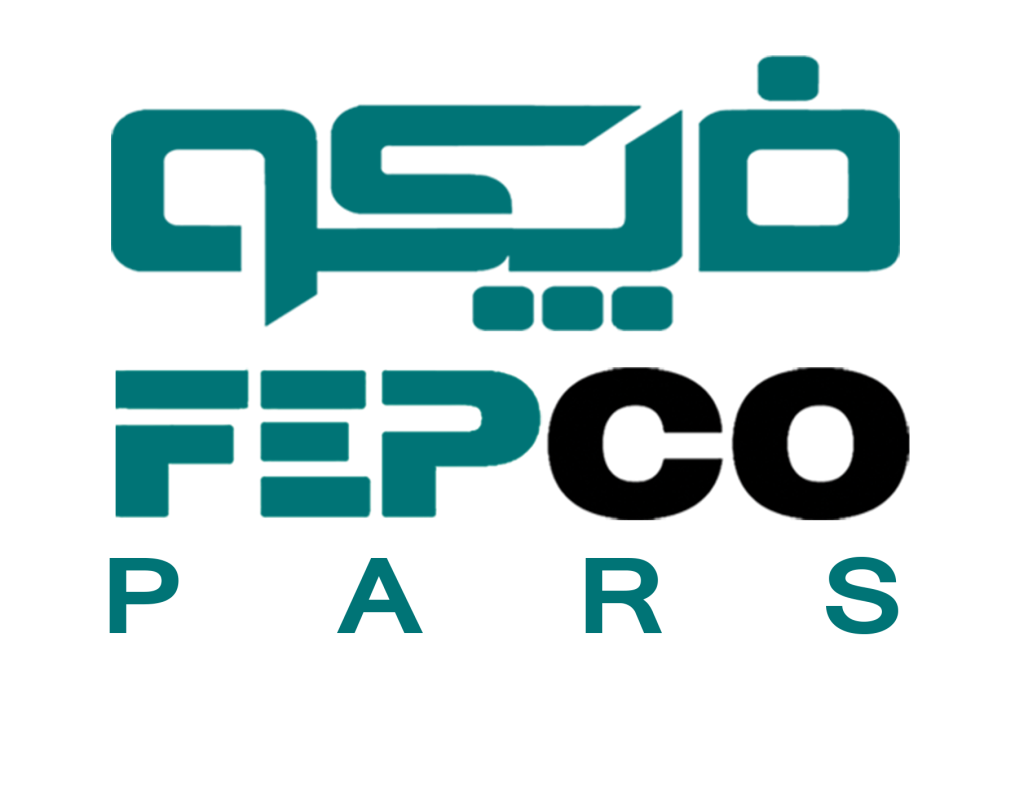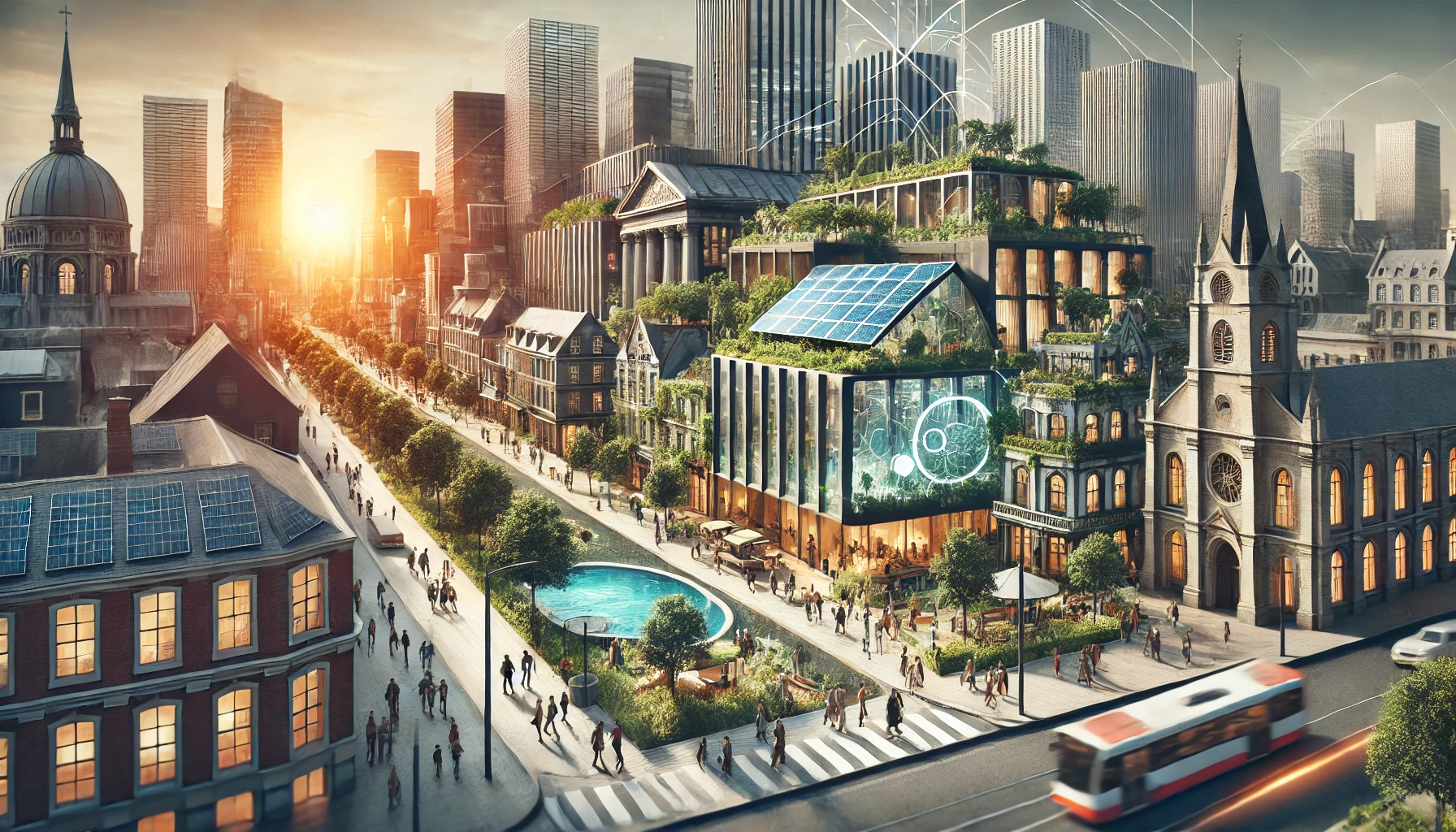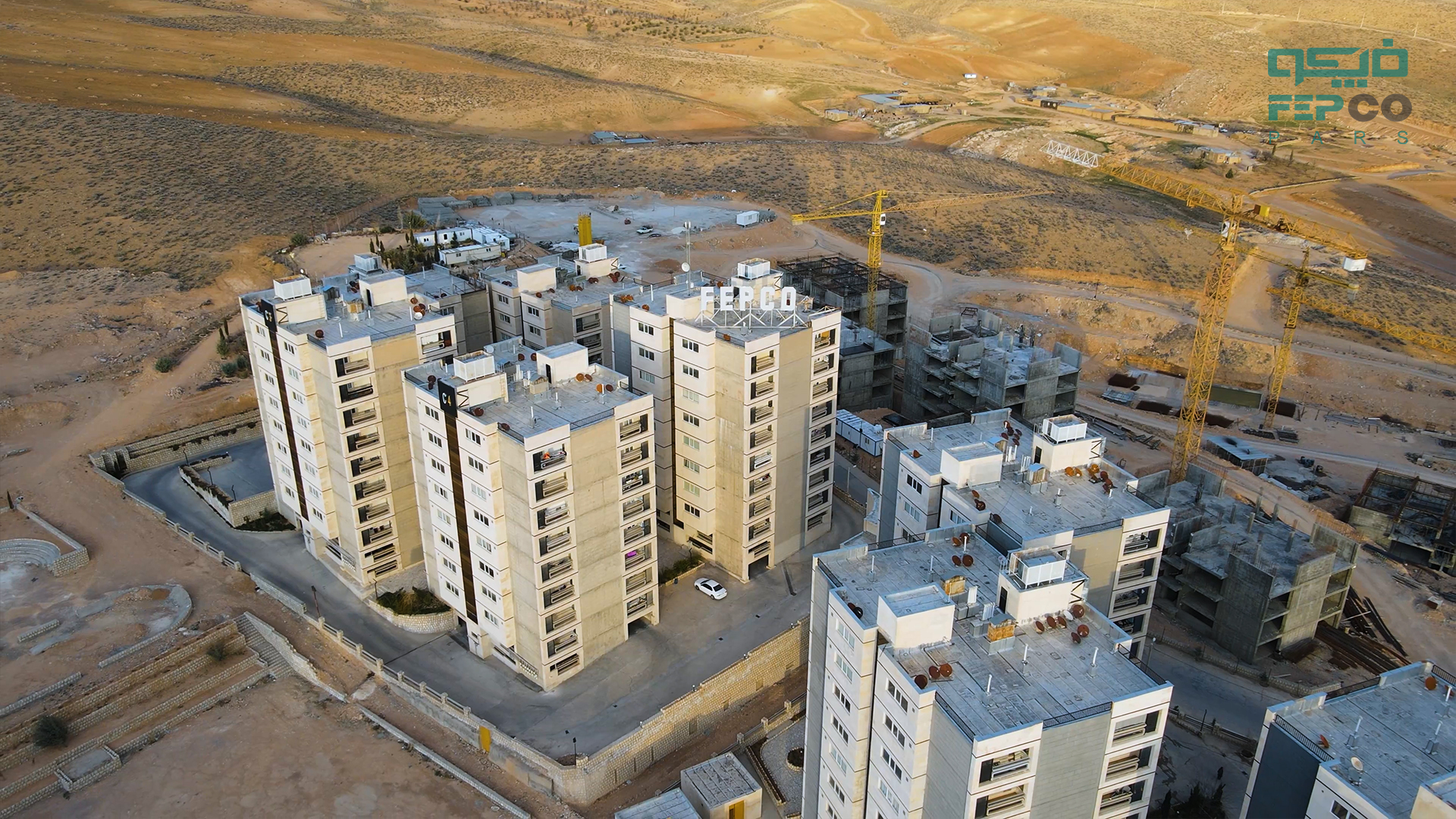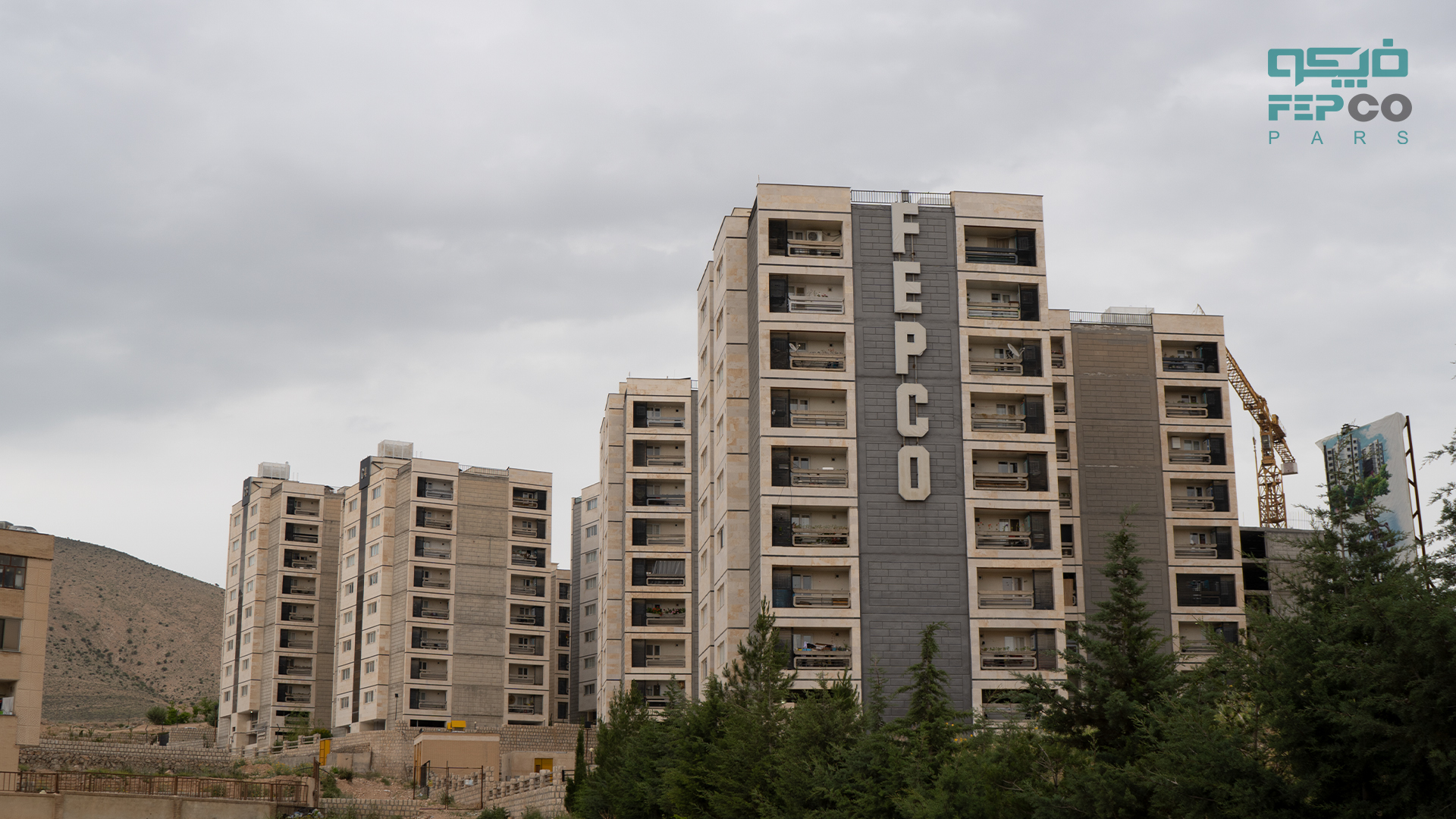This research delves into various aspects of urban transformations and environmental impacts, focusing on how urbanization developments and the rise of smart cities, alongside sustainable urban development, have played a significant role in shaping urban culture. Furthermore, the research highlights the role of modern architecture in urban transformations, examining its effects on urban lifestyles and social changes.
Key terms such as urban migration and cultural transformations reveal that urban culture has undergone substantial changes not only in the physical structures of cities but also in social and cultural interactions. This article also analyzes cultural changes in urban life and the role of sustainable urban planning in shaping future cities, while discussing the challenges and opportunities ahead.
The article further explores the following topics:
– Changes in Urban Culture in the Last Decade: How technological advancements and globalization have influenced urban culture.
– Environmental Impacts on Urban Architecture: The role of modern and sustainable architecture in improving the environment and reducing urban pollution.
– The Role of Smart Cities in Urban Transformations: How smart technologies have altered urban lifestyles and culture.
– Impacts of Migration and Social Changes in Cities: The effects of domestic and international migration on urban culture and sustainable city planning.
This article, produced by the Research and Development Department of Fepco (Saman Mechanic Farayand Energy Pars), is written with the aim of providing a comprehensive analysis of cultural and environmental changes in urbanization and proposing innovative solutions for improving urban development. It serves as a valuable guide for architects, urban planners, and managers of large-scale projects.
” Changes in Urban Culture Over the Last Decade
In the last decade, urban culture has undergone significant changes due to several key factors. These changes include social transformations, technological advancements, globalization, migration, and environmental changes, all of which have influenced the lifestyle and social interactions of urban dwellers. Below, the most influential factors affecting these changes and their roles in transforming urban culture are examined:
1. Technological Advancements and the Emergence of Smart Cities
One of the main drivers of urban transformation in the past decade has been the advancement of new technologies. With the rise of smart cities and the expansion of information and communication technologies, urban lifestyles have fundamentally changed. Smart cities, utilizing technologies such as the Internet of Things IoT, Artificial Intelligence AI, and Big Data, have contributed to improving the quality of urban life, increasing efficiency, and reducing energy consumption. These technologies have also brought about changes in public transportation, urban management, and public services, all of which have led to the creation of a new urban culture.
2. Social and Cultural Changes
Social changes resulting from globalization and increased migration to major cities have led to the integration of diverse cultures within urban environments. This has created cultural diversity and increased intercultural interactions in urban settings. Both internal migration from rural areas to cities and international migration have had profound effects on the cultural and social structures of cities. These changes have shaped multicultural urban communities and introduced new lifestyles in cities.
3. Sustainable Development and Environmental Awareness
In recent years, there has been a significant increase in attention to sustainable urban development and environmental awareness. These changes are the result of environmental impacts such as climate change and the depletion of natural resources. Many cities are pursuing the use of renewable energy, reducing air pollution, and managing resources sustainably. These trends have changed urban consumption and lifestyle patterns, leading to shifts in the design of buildings and public spaces. Modern architecture and sustainable designs aim to improve the environment and enhance the quality of urban life.
4. Transformations in Architecture and Urban Planning
In the past decade, modern and innovative architecture has played a crucial role in changing urban culture. Smart buildings, the use of eco-friendly materials, and novel architectural designs have not only impacted the appearance of cities but also altered people’s lifestyles and their interactions with their surroundings. Modern architecture, emphasizing energy efficiency, the use of efficient public spaces, and modern aesthetics, has transformed how citizens live and behave in urban environments.
5. Demographic Trends and Migration
Urban population growth and migration from rural areas to cities, as well as international migration to major cities, have been other key factors in urban cultural changes. These migrations have not only altered the demographic composition of cities but have also led to the creation of new cultures and their fusion with local cultures. These transformations have turned cities into spaces where people from diverse cultural backgrounds live and interact together.
6. Economic Impacts and Urban Development
Changes in the global economy and the economic growth of cities have also affected urban culture. The economic development of cities has led to an increase in job opportunities and the improvement of urban infrastructure. These changes, in turn, have contributed to an enhanced standard of living, expanded welfare services, and improved the quality of urban life, leading to significant shifts in urban culture.
In summary, urban culture in the past decade has been dramatically transformed by key factors such as technological advancements, social changes, sustainable development, migration, and economic transformations. These changes have not only influenced the lifestyle and social interactions of urban dwellers but have also had a profound impact on the design and development of cities and their architecture.
The Impact of Modern Architecture on Changes in Urban Culture in Large and Small Cities
Modern architecture has played a significant role in transforming urban culture in both large and small cities. These impacts, driven by the use of new technologies, sustainable design approaches, and changes in urban lifestyles, are evident not only in infrastructure and buildings but also in social interactions and the use of public spaces. Below, we explore several aspects of the effects of modern architecture on urban culture:
1. Sustainable Designs and Increased Environmental Awareness
Modern architecture, with its focus on sustainable design and the use of environmentally friendly materials, has played a crucial role in shifting citizens’ attitudes and behaviors regarding their living environments. In both large and small cities, smart and sustainable buildings have contributed to reducing energy consumption, better water resource management, and improved air quality. These architectural advancements have led to increased environmental awareness and changes in consumption behaviors and urban lifestyles. More people are now interested in living in green buildings and using renewable energy, which has contributed to changes in urban culture.
2. Efficient Public Spaces and Enhanced Social Interactions
One of the key principles of modern architecture is the design of multipurpose public spaces that foster social interactions. In large cities, the use of parks, pedestrian paths, open spaces, and public squares as central elements of urban design has encouraged people to use these spaces for recreation, exercise, and social interactions. This approach has also helped change traditional lifestyles and social interactions in smaller cities. Open and transparent architecture, combining private and public spaces, has contributed to creating a sense of community and increasing connections between citizens.
3. Improvement in Urban Quality of Life
Modern architecture, through the application of new technologies and efficient designs, has had a significant impact on improving urban quality of life. Buildings equipped with smart systems and modern amenities have enhanced the urban living experience and provided greater comfort and convenience for city residents. From smart air conditioning systems to automated energy management, modern architecture has not only improved building functionality but also played a key role in reducing the stress of urban life and improving urban well-being. This improvement in quality of life has gradually changed urban culture, making city living more appealing to many people.
4. Changes in Lifestyle and Interior Design
Another effect of modern architecture is the transformation of urban lifestyles through efficient and modern interior designs. Modern buildings, offering flexible spaces and minimalist designs that optimize the use of space, have revolutionized urban living. People in both large and small cities have become more inclined to use smaller, more efficient spaces, which has led to changes in consumption patterns and ways of living in urban environments. These changes in interior architecture, with an emphasis on functionality and simple aesthetics, have contributed to shaping a new culture of urban living.
5. The Role of Technology in Modern Architecture and Cultural Changes
New technologies such as smart building systems and energy management technologies have directly influenced changes in urban culture. These technologies, used in modern buildings, have reduced energy consumption and increased building efficiency, helping to lower the costs of urban living and enhance modern lifestyles. Moreover, modern technologies like Virtual Reality VR and Augmented Reality AR in architectural design have improved citizens’ interactions with urban spaces and contributed to more impactful social interactions.
6. Focus on Social and Human Needs
Modern architecture increasingly focuses on social and human needs. The design of buildings and public spaces, with attention to the well-being of citizens and the creation of environments that meet social needs, has transformed the culture of social interactions and human relationships. Modernly designed commercial, cultural, and educational centers have played a key role in changing the behavioral and social patterns of urban dwellers and have contributed to the development of a dynamic urban culture.
In summary, modern architecture, through the use of new technologies, attention to sustainability, and the design of efficient public spaces, has profoundly impacted changes in urban culture in both large and small cities. These changes in lifestyle, social interactions, and the use of urban spaces all highlight the transformations brought about by modern architecture as one of the key factors shaping urban culture.
Conclusion
The analysis of changes in urban culture in recent years highlights the broad impact of urban transformations and environmental factors on the social and physical structures of cities. With the development of technology and the emergence of smart cities, modern architecture and sustainable urban development have played a key role in shaping these changes. Over the last decade, urban culture has evolved due to new technologies, migration, and socio-economic factors, creating both challenges and opportunities for cities.
In this study, the role of modern architecture in improving urban quality of life and adapting to social and environmental needs has been specifically examined. Modern architecture, with its focus on sustainable designs and the use of smart technologies, has contributed to urban transformations and emphasized the influence of architecture on urban lifestyles. These effects have not only improved infrastructure and public spaces but also enhanced urban culture and created new patterns of social interaction.
Urban migration and the resulting socio-cultural changes have also been key factors in shaping urban culture. The analysis of cultural changes in urban life shows how social changes and migration have fostered cultural diversity and new social interactions. In this context, sustainable urban planning and development approaches have played an important role in managing environmental and cultural changes.
Additionally, the use of smart technologies in cities, especially in resource management and infrastructure improvement, has accelerated cultural and social changes. The role of smart cities in urban transformations highlights the importance of using technology to create more efficient and sustainable cities.
In conclusion, the environmental impacts on urban architecture and sustainable urban development have gained increased significance in recent years, underscoring the need to continue these approaches to address future urban challenges. As a pioneer in urban project development, Fepco Saman Mechanic Process Energy Pars can play a vital role in managing urban changes and enhancing urban culture through modern architecture and sustainable approaches.
Overall, this article produced by the Research and Development Department of Fepco (Saman Mechanic Farayand Energy Pars), shows that cultural and environmental changes in urbanization require alignment with modern architectural transformations and sustainable urban development to best address future challenges and opportunities.
Frequently Asked Questions
1. How has urban culture changed in the last decade?
Over the past decade, urban culture has dramatically changed due to several key factors such as technological advancements, migration, globalization, and sustainable development. The increased use of smart technologies and modern architecture in cities has transformed lifestyles and social interactions. Cities are moving toward sustainability and more efficient use of public spaces, which has directly impacted the way people live.
2. What is the role of modern architecture in urban changes?
Modern architecture, through the use of sustainable materials, smart technologies, and innovative designs, has contributed to significant changes in the structure and functionality of cities. It has not only improved urban quality of life through smart and sustainable buildings but also enhanced social interactions with attractive public space designs, accelerating cultural shifts in urbanization.
3. How have environmental factors impacted urban architecture?
Environmental factors such as climate change and the depletion of natural resources have driven urban architecture toward sustainability and energy efficiency. The use of eco-friendly materials and the design of energy-efficient buildings are some of the key outcomes of environmental influences on modern urban architecture.
4. How has sustainable development contributed to cultural changes in cities?
Sustainable urban development, with its focus on reducing the consumption of natural resources, optimizing urban spaces, and improving the quality of life, has played a key role in changing urban culture. Citizens have gradually become more aware of the importance of preserving the environment and using sustainable resources, leading to changes in behaviors and lifestyles in urban settings.
5. How have smart cities influenced urban culture?
Smart cities, by utilizing new technologies such as the Internet of Things IoT and Artificial Intelligence AI, have made cities more efficient. These cities have optimized resource management, transportation, and public services, improving the quality of life and changing urban lifestyles. The culture of using technology to enhance the quality of life has become an integral part of modern urbanization.
6. How have social changes affected architecture and urbanization?
Social changes such as increased migration and cultural diversity have influenced architecture and urban planning. The need for multi-functional and flexible spaces to meet the diverse needs of various populations has encouraged architects to design buildings and spaces that align with social changes. These changes have led to more dynamic and flexible architecture.
7. What is the impact of urban migration on urban culture?
Urban migration, whether from rural to urban areas or international migration, has increased cultural diversity in cities. This cultural diversity has led to new intercultural interactions and changes in social behaviors and urban lifestyles. Modern architecture, with its emphasis on public space design that accommodates various cultural needs, has helped adapt to these changes.
8. How has technology impacted urban culture?
New technologies such as the Internet, smart devices, and automated systems have increased city efficiency and improved the quality of life. These technologies have changed the way people interact socially, use urban services, and even consume energy. The use of technology in daily urban life has become an inseparable part of modern urban culture.
9. How has modern architecture contributed to sustainable development?
Modern architecture, by using eco-friendly materials and sustainable designs, has helped reduce energy consumption and manage natural resources. The design of smart buildings and the use of sustainable technologies have played a key role in creating cities with minimal environmental damage and maximum energy efficiency, which forms an essential part of sustainable urban development.
10. What is the future of urban culture considering current changes?
Given the rapid changes in technology, sustainable development, and increasing cultural diversity in cities, the future of urban culture will likely focus on greater use of smart technologies, improved social interactions, and environmental preservation. Future cities will probably place greater emphasis on citizens’ quality of life and environmental sustainability, with modern architecture continuing to play a central role in these chan






